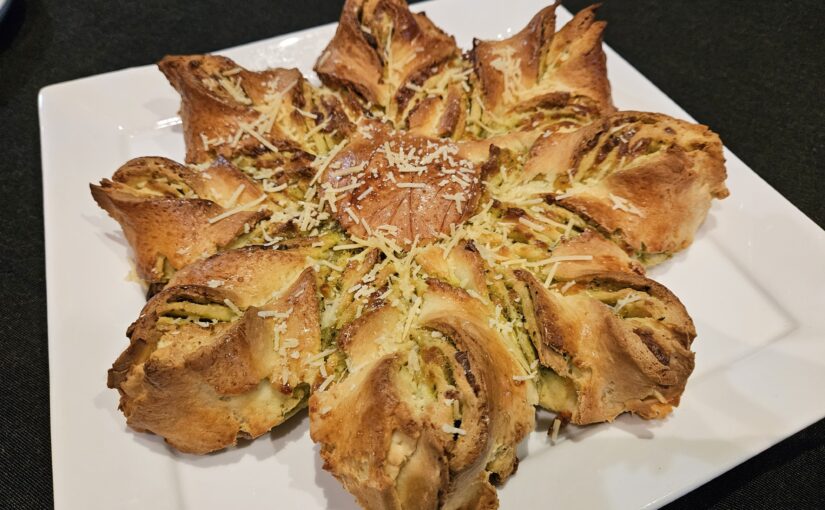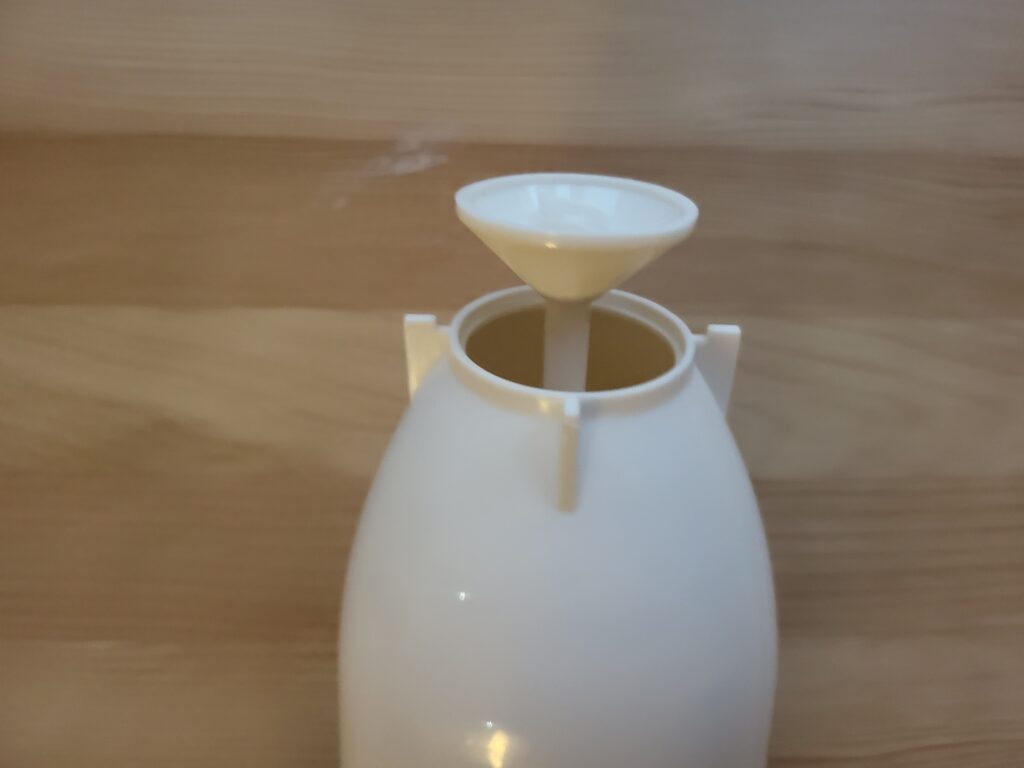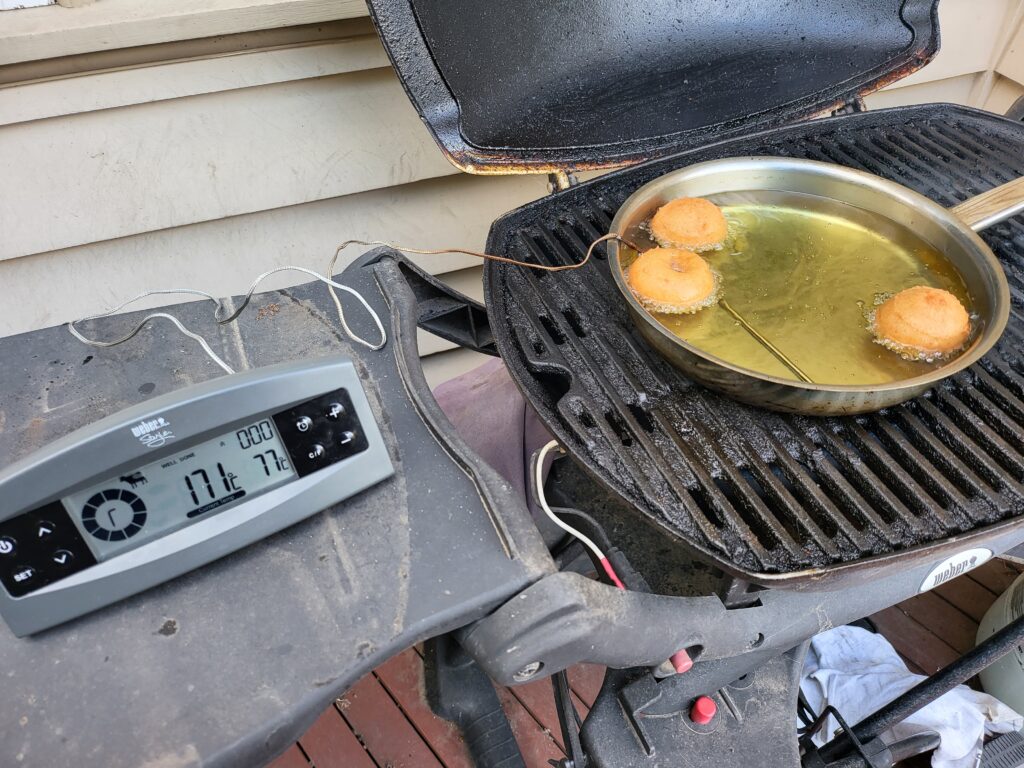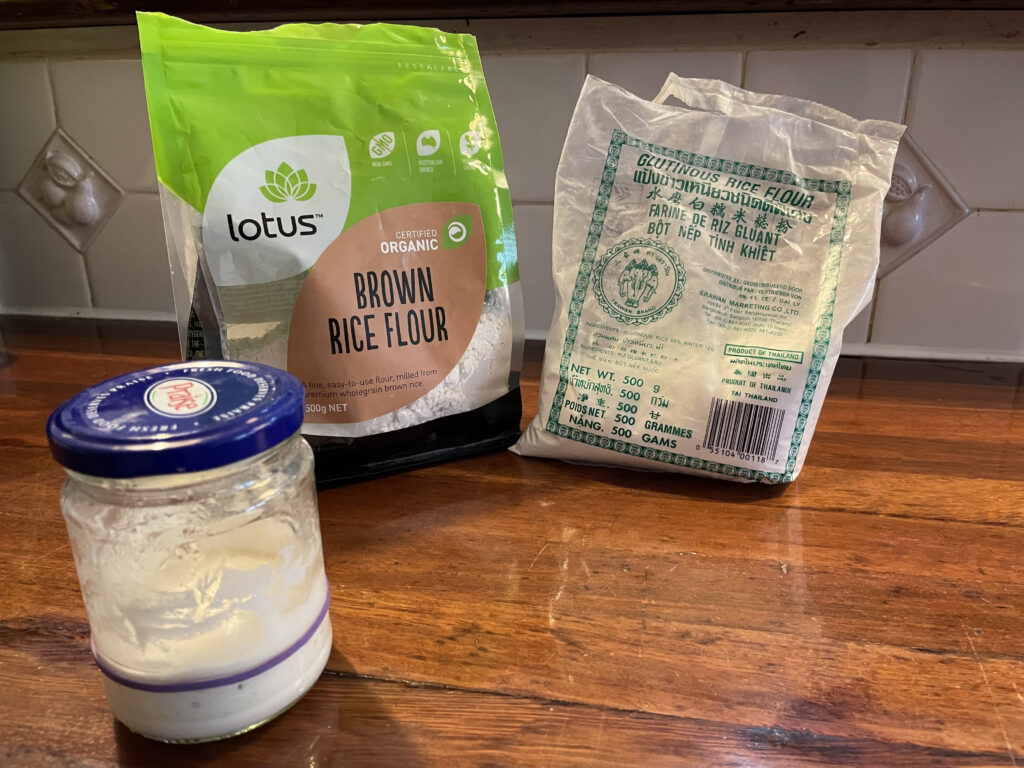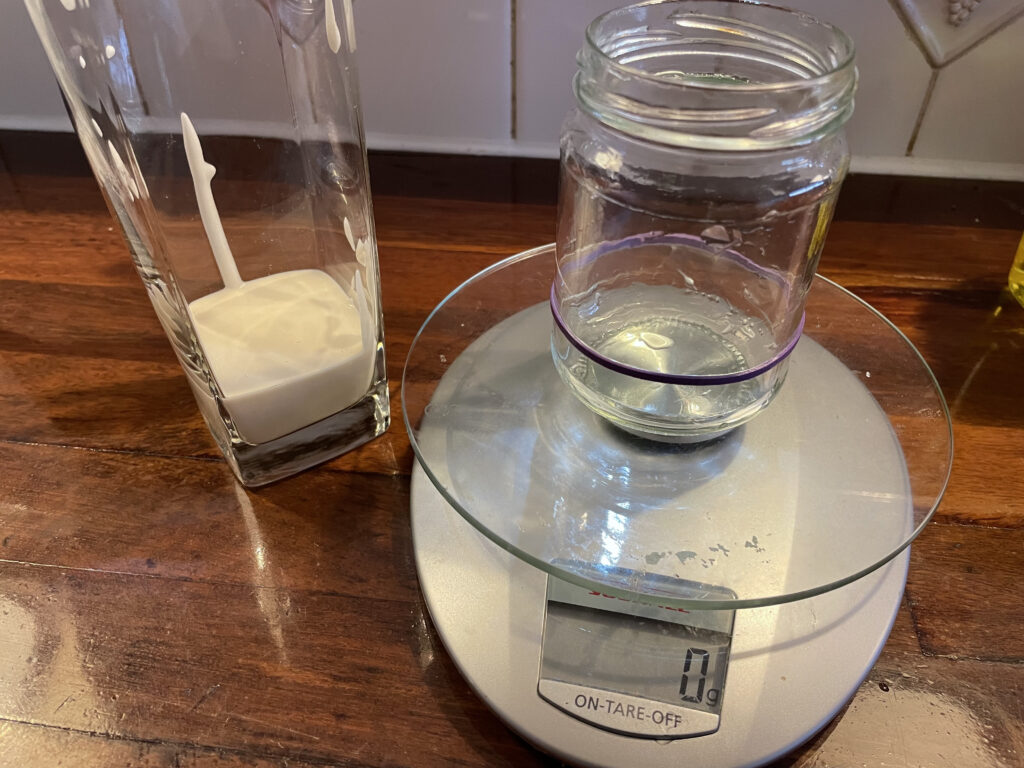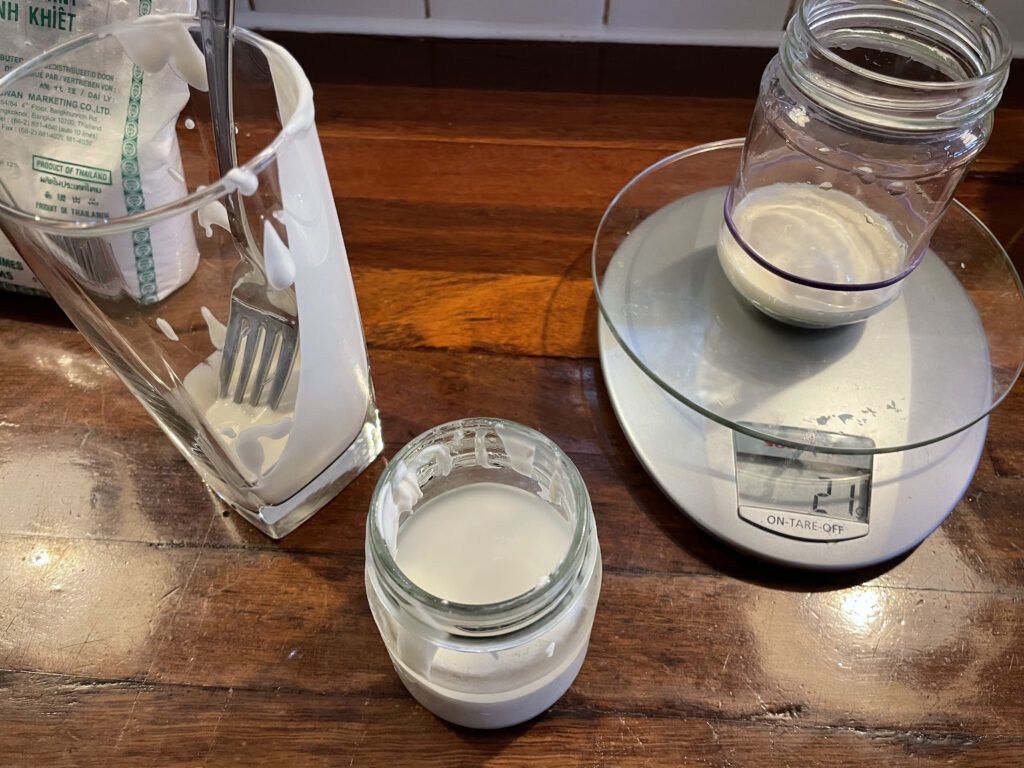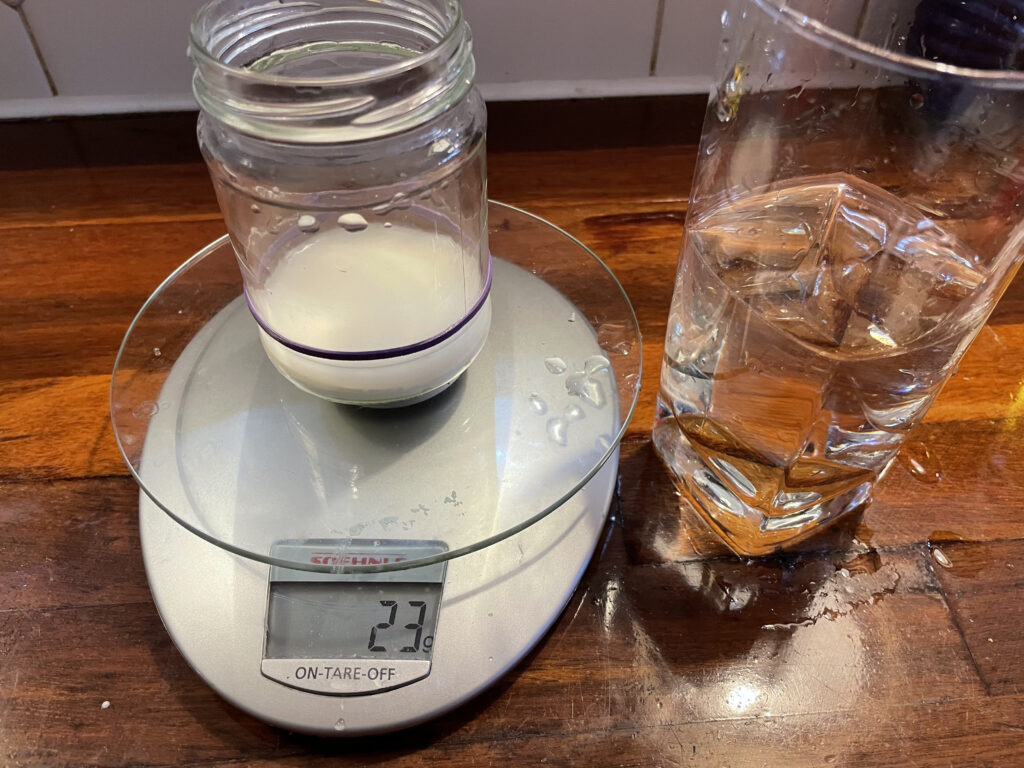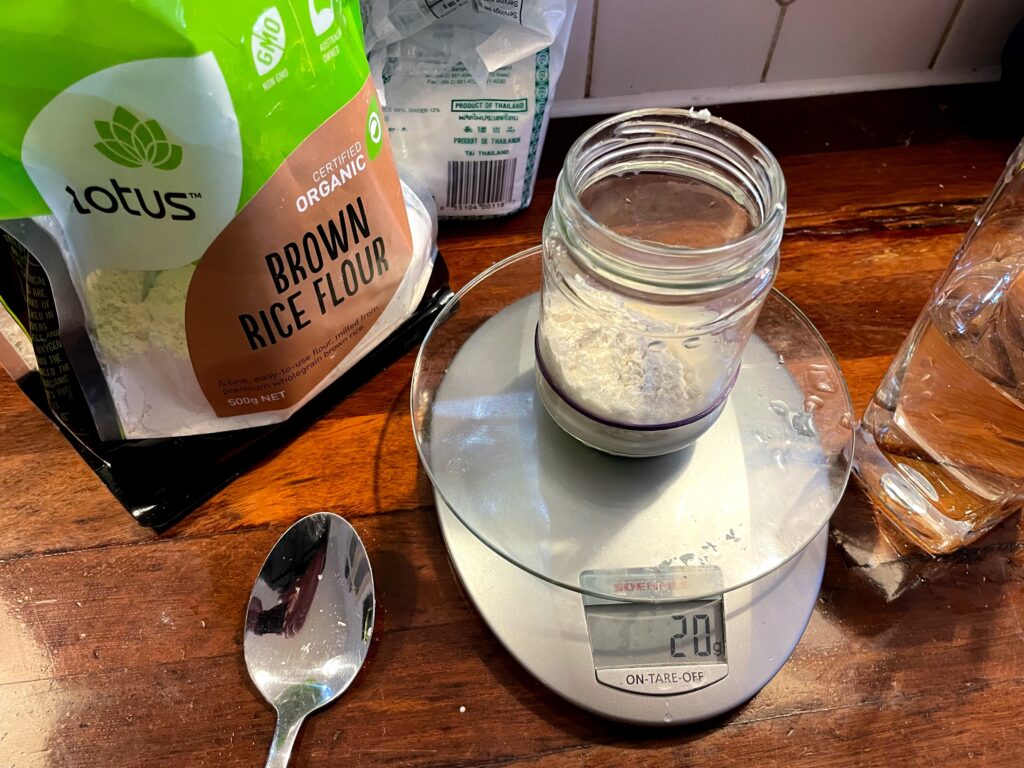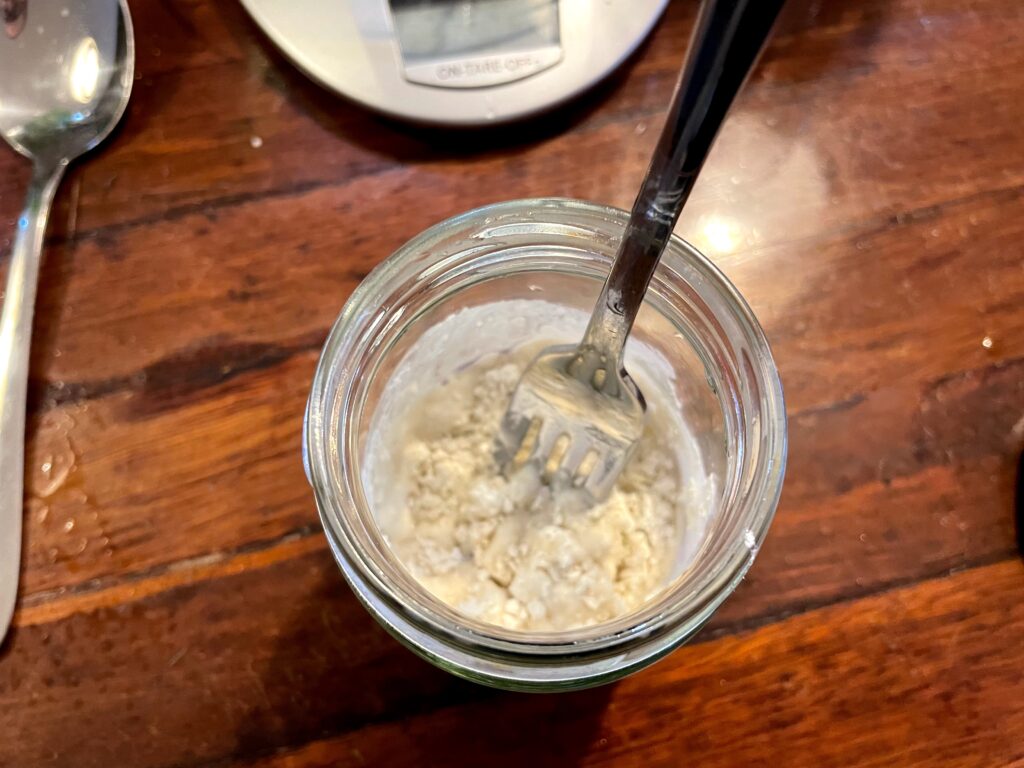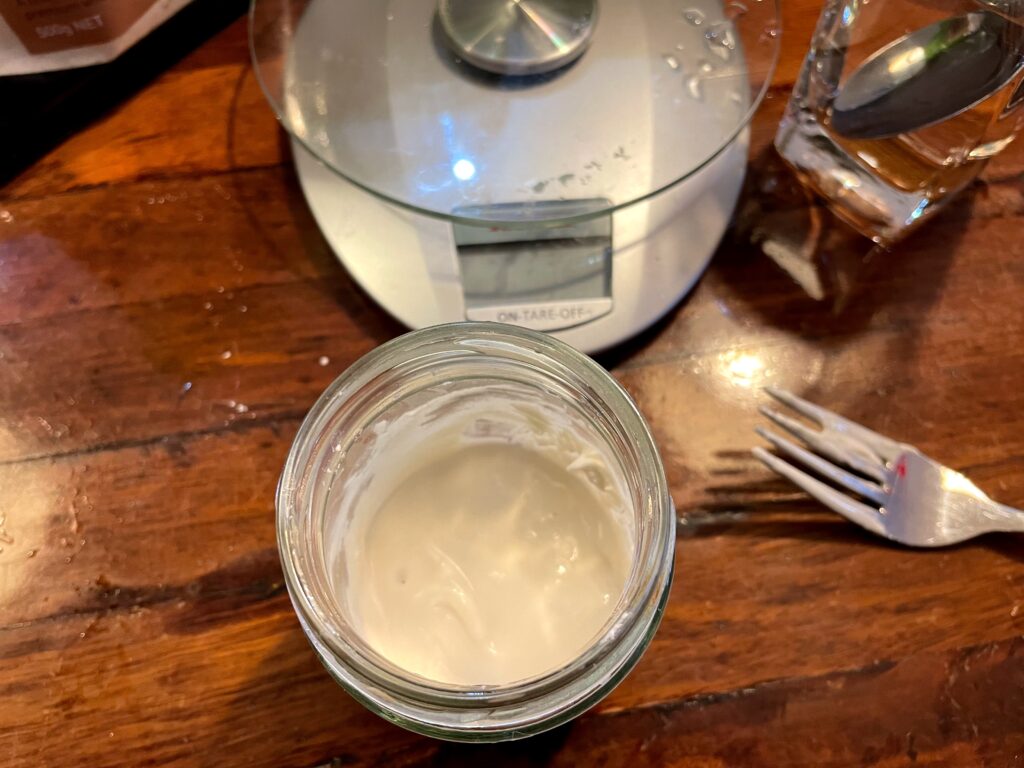I was inspired to cook this for a recent recipe club dinner on the theme of “in pieces”. It is based on a non-gluten-free recipe from the Woolworths site. However, since I had to tweak it a little, and others may also be interested, I’m putting my version here.
Ingredients
- 200 mL of milk
- 3 teaspoons (15 mL) of caster sugar
- 10g instant yeast
- 3 large eggs (2 initially, then 1 later)
- 80g unsalted butter
- 410g of GF bread flour – I use Well & Good Crusty Bread Mix
- 1/2 teaspoon of table salt
- small jar of basil pesto – I use Barilla Genovese Pesto
- 50g of shredded mozzarella cheese
- small sprinkle of grated parmesan cheese
Method
- Put milk in a microwave safe jug and warm on low power until tepid. Stir in caster sugar, then stir in the yeast. Set aside for 5-10 mins until it is clear that the yeast has activated (it becomes frothy).
- Break two of the eggs into a glass or cup and beat a little.
- Cube the butter and leave to soften.
- Put bread flour, salt, eggs, and the milk-yeast mixture into the bowl of a mixer, and using a dough hook, knead on low speed for 2 minutes until everything is combined. Up the speed a notch and knead for up to 10 minutes until the dough is smooth. You may need to stop the mixer a couple of times to rearrange the dough if the dough hook isn’t doing its job.
- If butter isn’t soft by this point, place it on a microwave-safe plate and give it some zaps at low power. Don’t get it to the point it is melting.
- While the mixer is running, add the butter a cube at a time, ensuring it is well combined before adding more. Let the mixer run for another 5 minutes.
- Pre-heat (fan-forced) oven to 180 degrees Celcius.
- Form the dough into a ball and place in a bowl under a tea-towel or plastic cover, in a warm place, until it has doubled. It may take 30-60 minutes.
- Place baking paper on a large tray, e.g. a pizza tray. Cut the dough-ball into four – there should be about 200g in each quarter.
- With each dough quarter, place it between two pieces of baking paper, and roll into a flat circle. It doesn’t need to be absolutely circular. Place it onto the large tray, so you eventually create a stack. However, note the following step:
- For the first three such circles, spread sparingly a tablespoon (~15 mL) of pesto across the surface, leaving a small (1-2 cm) border without pesto. Sprinkle a third of the mozzarella cheese across the top.
- You now have a round stack of four flat dough layers with pesto and cheese between each layer. Place an upturned drinking glass (about 7 cm diameter) in the middle, and cut outward in radiating lines so that there are 16 even strips. The video on the Woolworths recipe page is worth a watch at this point. Remove the glass.
- With the remaining egg, break it into a glass or cup and beat a little. Using a pastry brush, brush the egg onto the border of the top layer.
- With pairs of adjacent strips, twist them in opposite directions and then push the tips together (that had been brushed with the egg) to join them, making a point of the star.
- Brush the remaining egg across the dough surface.
- Place the dough star in the hot oven for 30 minutes.
- Remove, and sprinkle grated parmesan across the bread.
- Ideally serve within a couple of hours of baking, but will keep in an air-tight container for another day.
